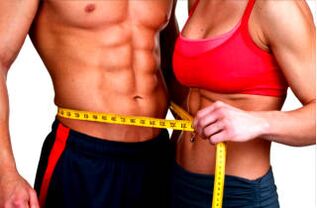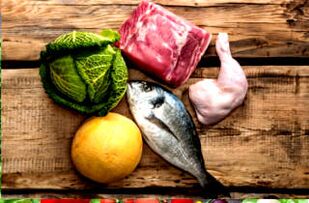The ketogenic diet is not a popular diet. However, it is similar to many other better known nutritional systems: Atkins, Dukan, etc. All of these diets are low-carb. They involve an almost complete rejection of carbohydrates in the daily diet. It is very effective for losing weight and burning subcutaneous fat. Those extra pounds are melting before our eyes! Additionally, the ketogenic diet is a favorite among athletes because it allows you to lose weight without sacrificing muscle mass.
dietary principles
Today, our diets are oversaturated with carbohydrates, especially fast carbs. Buns, chips, snacks, bars—these products as snacks are true carb time bombs. This type of nutrition not only leads to overweight but also to the development of diabetes and atherosclerosis. An excess of fast carbohydrates can slow down metabolism, leading to drowsiness, lethargy.
However, the useful slow carbohydrates in grains can lead to weight gain. The problem is, any carbohydrates when ingested are converted to glucose, which is required for energy.
How does the keto diet work? With significant restriction of carbohydrate intake, the way the body works is rebuilt. Nature has devised reserve mechanisms to capture energy for vital processes. If the amount of glucose obtained from dietary carbohydrates is close to zero, the body will start producing it, breaking down fat stores. This process is called ketosis, hence the name of the diet: keto or ketogenic.
Instructions for Properly Preparing Menus
In order to properly write a ketogenic diet menu, you have to do some work. First, you need to calculate your daily calorie intake. This can be done online with the help of special programs.

After determining your daily calorie intake, it's important to choose a ketogenic diet goal. To lose weight, you need to subtract 500 calories from the number you get, and to gain muscle mass, you need to add 500 calories.
Then we calculate the amount of protein, fat and carbohydrates required for each day. Carbohydrates should be no more than 10%, and you should try to gain lost calories not at the expense of fat, but at the expense of protein. It sounds complicated, but again, with the help of an online food diary, anyone can control the proportion of KBJU in their diet.
Let's take an example of a calculation. A woman who weighs 60 kg has a fat percentage of 20 (you can determine the fat percentage with the naked eye or using a specialized analyzer). The daily calorie intake is 2000. To lose weight, subtract 500 and we get 1500 kcal per day. We calculate BJU. 1 kg of muscle requires 2. 2 grams of protein (4 calories), 0. 4 grams of carbohydrates (4 calories), and the remaining kilocalories are reserved for fat at a ratio of 9 calories per 1 gram of fat. So, 60 kg - 20% = 48 kg of muscle mass.
Protein 2. 2 * 48 \u003d 106 g (424 Kcal)
Carbohydrate 0. 3 * 48 \u003d 19 g (76 Kcal)
1500-424-76 \u003d 1000 kcal, or about 110 grams of fat per day.
Simplified Instructions
For those whose life is related to training, it is necessary to follow the formula of the calculation menu. For people who stay away from exercise, there is an easier option for determining a ketogenic diet. There are two lists - these are recommended and prohibited products.

Recommended Products:
- Meat
- bird
- fish
- dairy products
- nut
- cheese
- Vegetables (except potatoes, beets and beans)
prohibit:
- Any candy, incl. sugar
- baked goods
- spaghetti
- fruit, incl. dried fruit
- cereals
On a keto diet, you need to monitor the carbohydrate content of your food. This information can be obtained from the product's packaging (if it is a finished food) or by looking at the Nutrition Facts. In general, you should prefer products with no more than 10 grams of carbohydrates per 100 grams. Following this rule, it's easy to make a list of products to buy and create a menu for the week.
Sample Ketogenic Diet Menu

Option 1:
- Breakfast: Cheese Omelette.
- Lunch: Vegetable soup with chicken stock, a piece of rye bread.
- Afternoon snack: Yogurt.
- Dinner: Beef stew, fresh vegetable salad.
Option 2:
- Breakfast: cottage cheese.
- Lunch: Boiled chicken breast with buckwheat.
- Afternoon snack: Nuts.
- Dinner: Salmon with vegetables, baked in foil.
During the day, you need to drink enough water (about 2 liters per day). Unsweetened tea and coffee are allowed. Additionally, fiber consumption is recommended to normalize the digestive process.
Contraindications
Low-carb diets are dangerous because they tax the liver, kidneys, and cardiovascular system. So for people with problems with these organs, the ketogenic diet is contraindicated. Also, people with constipation and other digestive issues should not follow a ketogenic diet. Healthy people need to consume additional vitamin and mineral complexes during the ketogenic diet.
The role of the ketogenic diet
Reviews and results suggest that only the first 3-4 days of a ketogenic diet are difficult. At this point, the body is reorganizing into a ketogenic state, so you will feel weak and dizzy. In the future, these negative effects disappear and the fat burning process begins. For good results, the diet must be followed for at least 3 weeks.
Those who were already on the ketogenic diet noticed no hunger. Also, sugar cravings decrease at the end of the diet. The body is accustomed to eating sugar-free, which contributes to healthy eating habits. If you look at photos of people before and after dieting, you'll see relief. This is especially evident in those who do not forget physical activity. The ketogenic diet is great for athletes and anyone who wants to get in shape!






























